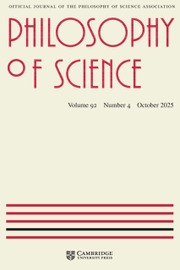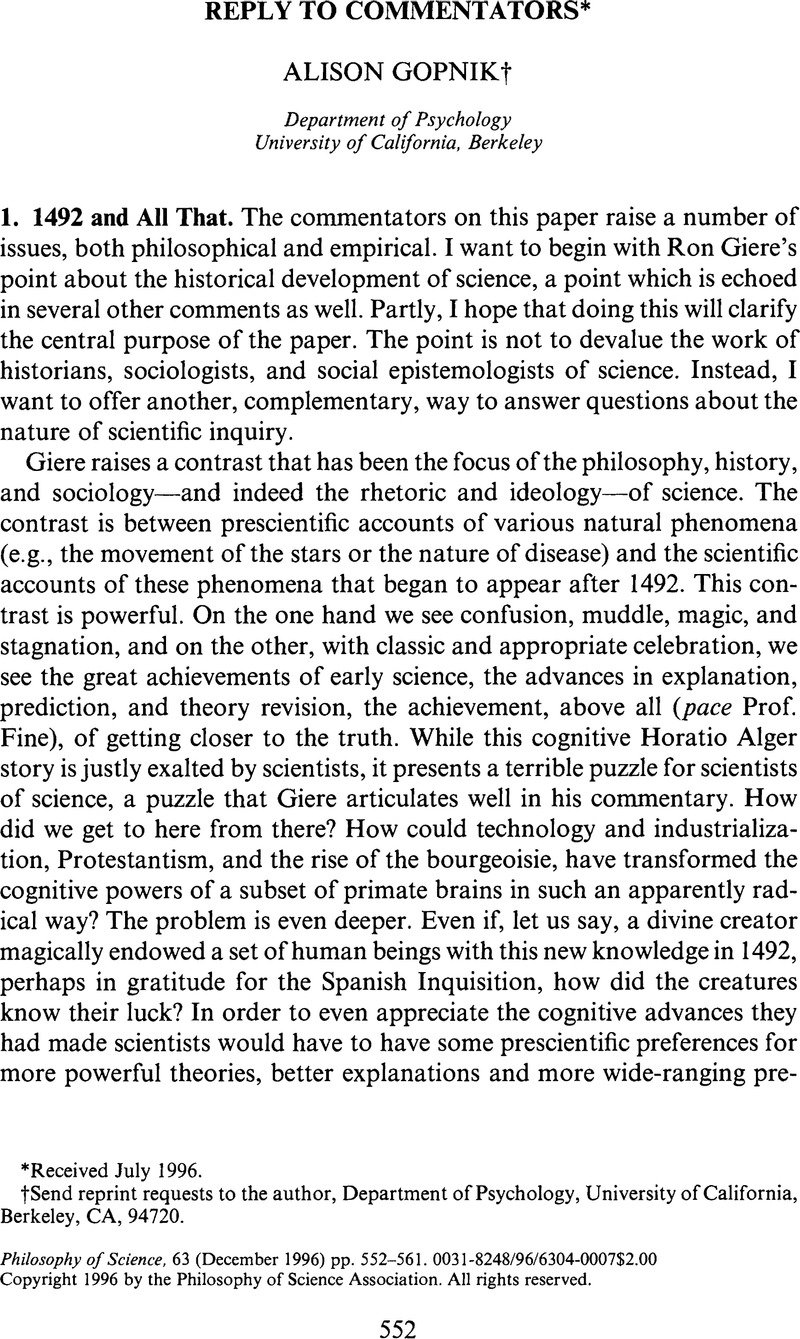Crossref Citations
This article has been cited by the following publications. This list is generated based on data provided by Crossref.
Downes, Stephen M.
1999.
Can Scientific Development and Children's Cognitive Development Be the Same Process?.
Philosophy of Science,
Vol. 66,
Issue. 4,
p.
565.
Bishop, Michael A.
and
Downes, Stephen M.
2002.
The theory theory thrice over: the child as scientist, Superscientist or social institution?.
Studies in History and Philosophy of Science Part A,
Vol. 33,
Issue. 1,
p.
117.
Brennan, Andrew
2004.
The birth of modern science: culture, mentalities and scientific innovation.
Studies in History and Philosophy of Science Part A,
Vol. 35,
Issue. 2,
p.
199.
Glennan, Stuart S.
2005.
The modeler in the crib.
Philosophical Explorations,
Vol. 8,
Issue. 3,
p.
217.


